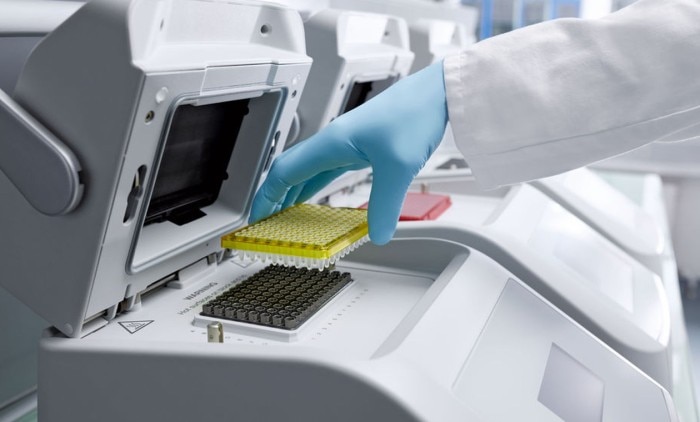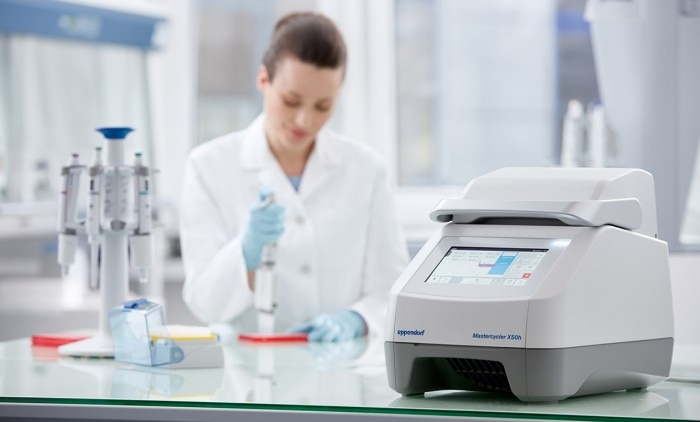MENU
NL | EUR
NL | EUR
No results found
Search Suggestions

PCR for NGS - Why cyclers and consumables can spoil your run
Lab Academy
- Molecular Biology
- PCR Cyclers
- Efficiency
- Next Generation Sequencing
- Amplification & PCR
- Quality
- Reproducibility
PCR cyclers and consumables are typical sources of error in next-generation sequencing workflows. The nightmares range from non-specific products, loss of yield to false results. Runs have to be repeated at the burden of sample material, time and resources. You do not want your PCR become a pitfall in NGS? Then you’d take a closer look on your cycler and the consumables!
The power of NGS
Scoring in discovery power, sensitivity, scalability and throughput, next-generation sequencing (NGS) truly deserves to be a "next-generation" approach. The advantages are manifold. You can study whole genomes in a single NGS experiment and identify novel variants and transcripts in short time. Target regions of interest with large portions of genes can be sequenced simultaneously across a tremendous number of samples. SNPs can be discovered in large scale. The capacity of massive parallel sequencing offers many opportunities to address a variety of biological problems.
Typical error sources in NGS
PCR is the backbone of the most NGS protocols. The applications include converting samples to sequencing-ready amplicon libraries, sample/library enrichment including quality control and quantification. PCR is used in library preparation for both whole genome and targeted sequencing approaches. In NGS experiments, the processes are complex and expensive. The sample material is often very valuable. It is obvious, what counts in NGS PCR: Successful sample processing and reliable and reproducible results based on an optimal resource management. Therefore, it is worth to avoid potential sources of error.
Do you have reliability, quality and performance of cyclers and consumables in mind? If not, you should. Here comes the “why”: PCR cycler and consumables can lead to non-specific amplifications, loss of yield and can impede reliability and reproducibility of results!
Read more
Read less

- Edge effect of cyclers
Difference in gradient and temperature across the plate might affect efficiency and lead to non-specific amplifications. All templates should be treated in the same way!
- Interfering leachables
Plasticizers, biocides or slip agents can leach out of the plastic material during normal laboratory use and can falsify results.
- Warped plates
Low quality plates often get warped by the heating-cooling cycles. This impedes manual bead purification and hinders seamless automation workflows.
- Overshoot or Undershoot
Too high (overshot) or too low temperatures (undershoot) caused by block inertia, after heating or cooling ramps, have a negative effect on the PCR. Overshoot at beginning of denaturation kills enzyme activity and polymerase efficiency. Possible consequences are loss of yield up to no detectable amplification. Undershoots at beginning of annealing lower the specificity of primer annealing and induce non-specific amplification products.
How to get the best out of your PCR
As you now know what is important, it will be easy for you to eliminate these sources of error before potential risks arise:1. Reliable cycler
Read more
Read less

- Excellent temperature homogeneity
High quality Peltiers ensure minimal temperature differences between wells, resulting in high temperature homogeneity across the entire block. Stable temperatures treat all your templates in the same way - the best prevention of edge effects! You can use the full 96-wells or 384-well plate capacity to obtain reproducible results. (A peltier is the component within a cycler responsible for heating and cooling the metal block.)
- Fast temperature verification
A temperature control should assess fast and reliably the cycler performance, ensuring that the degree of Over- and Undershoot is within the optimal range. This allow fast heat transfer without detrimental effects.
- Cycler speed
To stay efficient and save time, the cycler should be fast and not drag out the run. The advantages: You can continue the protocol faster and the cycler is sooner available for the next samples.
- Intuitive operation
Saves time on an ongoing basis during routine applications.
- Cycler networking
Meet high throughput demands with the help of a cycler management software to manage a multitude of cyclers for an efficient multiplication of your reactions. Optimal consumables.
2. Optimal consumables
- Gold standard plates
Go for two-component plates with a stable frame of polycarbonate and thin wells made of polypropylene. Do not economize here! Often, cheap PCR plates are made of only one material and warp more like the starship Enterprise. Low binding plates ensure that fewer molecules adhere and more molecules are available for chemical reactions.
- No leachables
Ensure that your plate manufacturer uses no leachables in its plastic materials.
- Perfect vessel to block fit
For optimal temperature transition, the shape of the vessel should fit the shape of the cycler block perfectly.
- Thin vessel walls
For fast temperature transfer, vessel walls should be as thin as possible.
- Batch-to-batch consistency
To make your data comparable, choose a reliable manufacturer, so you can be sure that you will always get the same plate quality with every new order.
- High-throughput friendly
Stable gold standard plates allow for automation. Barcode options simplify working with very large sample quantities and automated systems.
Read more
Read less
We recommend checking your cycler and consumables - don’t compromise your samples and reliability of results by PCR!
Read more
Read less
